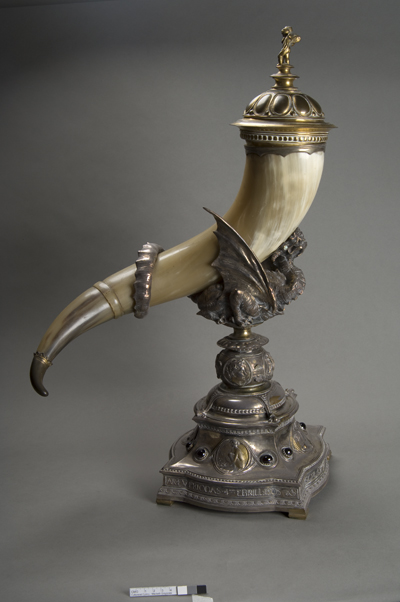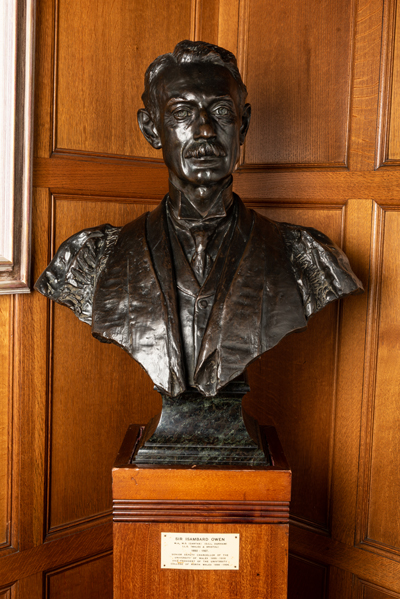
This ‘Corn Hirlas’ made by Sir William Goscombe John was commissioned by the University of Wales to be given as a wedding gift to its Deputy Vice-Chancellor, Sir Isambard Owen. He married, in 1905, Ethel Holland-Thomas, of Cae’r Ffynnon, Talsarnau, Meironnydd. A ‘Corn Hirlas’ is traditionally used as part of the Gorsedd y Beirdd ceremonies. The horn is presented by a local young mother, ‘Mam y Fro’. She offers the horn as a symbol of the wine offered to welcome the Gorsedd to the area.
Sir Herbert Isambard Owen (1850-1927) was a physician and academic. He was a major figure in the creation of the University of Wales and was its Deputy Vice-Chancellor, 1894-1910. He was also influential in the development of the University College of North Wales, Bangor. According to Sir Harry Reichel it was Isambard Owen who came up with the idea that the structure of the University College of North Wales should be adapted to the rocky ridges rather than that the ridges should be levelled to accommodate the building.

William Goscombe John (1860-1952), born in Cardiff was a Welsh sculptor known for his many public memorials. He assumed the name Goscombe from a Gloucestershire village near his mother’s old home. His father Thomas John was a woodcarver at Cardiff Castle and William joined his father while also studying at Cardiff School of Art. He later studied in London before travelling through Europe, living in Paris and working with French sculptor Rodin.
As a sculptor, John developed a distinctive style of his own while respecting classical traditions and forms of sculpture. He received commissions for portraits from the leading Welshmen of the day but as well as local patronage, he attracted work internationally. He designed the Hirlas Horn for the National Eisteddfod in 1898 and was one of the founding fathers of Amgueddfa Cymru.
This ‘Corn Hirlas’ can be seen in the Traditions case in Gallery 4.
